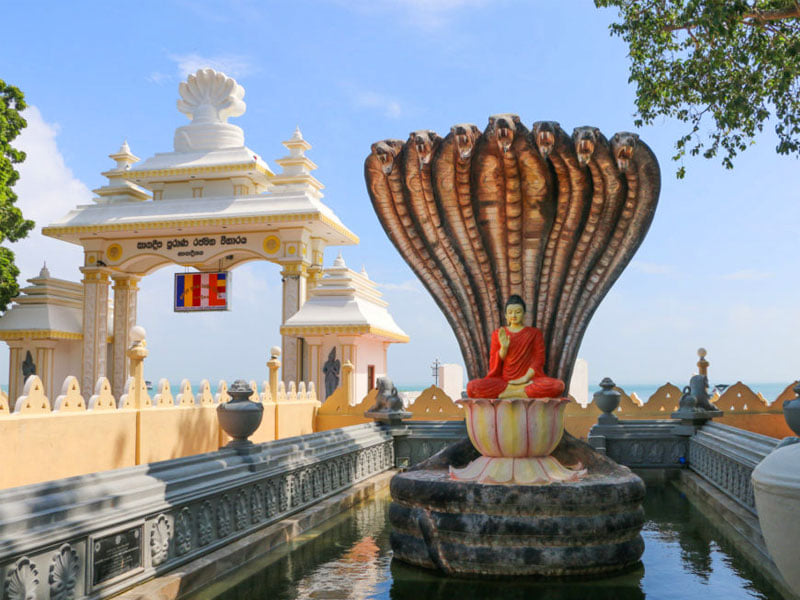The Naga Vihara, located in the Northern Province of Sri Lanka, is a historically significant Buddhist site with deep cultural and religious roots. It offers a glimpse into the rich heritage of the region and the enduring traditions of Theravada Buddhism.

Architectural Features: The Naga Vihara is known for its distinctive architectural elements, which include ancient stupas, monastic cells, and well-crafted stone sculptures. The ruins reflect the craftsmanship and artistic sensibilities of early Buddhist builders.

Art and Inscriptions: The site features ancient inscriptions in Brahmi script, which provide valuable historical and religious information. These inscriptions offer insights into the patronage of the vihara and its significance in the context of Sri Lankan Buddhism.

Cultural Relevance: The Naga Vihara is a symbol of the deep-rooted Buddhist traditions in the Northern Province. It reflects the region’s historical connections to the broader Buddhist world and its role in maintaining religious and cultural practices over centuries.




The Naga Vihara stands as a testament to Sri Lanka’s rich Buddhist heritage and historical legacy. Its ancient ruins and spiritual ambiance offer visitors a profound connection to the island’s past and a deeper understanding of its cultural and religious traditions.
This is the official website of the Ministry of Tourism, Republic of Indonesia. The contents listed on this website are intended for informational purposes rather than commercial. Any displayed sale is meant as a token of partnership and will always redirect you to our partners’ sites.